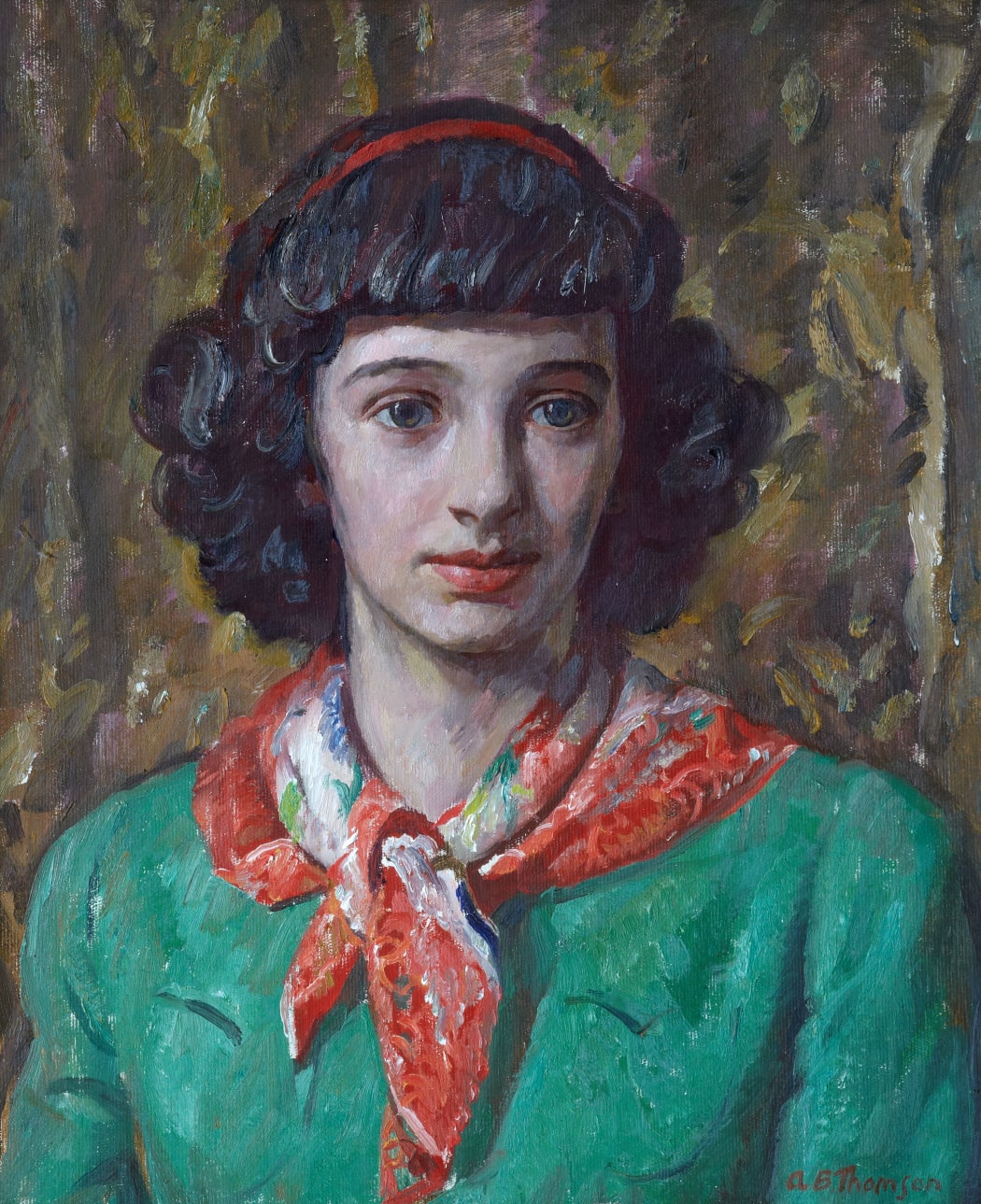
Adam Bruce Thomson OBE RSA RSW (1885-1976) came across as a very likeable individual, quiet, modest, unassuming, and highly respected as a teacher and as a friend. He was also, as the exhibition Adam Bruce Thomson: The Quiet Path, now on show at Edinburgh’s City Art Centre reveals, not a bad artist either.
A native of Edinburgh, Thomson was amongst the last group of students to be taught at the former Trustees’ Academy, and amongst the earliest cohort of students to train at the then newly established Edinburgh College of Art (ECA). Unusually, he gained not one, but two Diplomas from the College. A diploma in Architecture at the beginning of 1909, and a diploma in Drawing and painting at the end of 1909. Architecture was Thomson’s his first love, and his interest in old buildings remained with him as he pursued a career as an artist.

Adam Bruce Thomson OBE RSA, Loch Carron Shore, c.1968. Oil on board, RSA Thomas and Christina Forbes Hutchison Memorial Fund Purchase, 1968.
In 1910, Adam Bruce Thomson was appointed to the teaching staff at ECA. He would work there for the next 40 years, his time broken only by the First World War, during which he served with the Royal Engineers.
In addition to his day job at ECA, Thomson also taught evening classes. It was there that he first encountered and recognised the talent of William Wilson RSA, encouraging him to enrol as a full-time student. William Crozier RSA was another of Thomson’s students who would go on to enjoy artistic success.

Adam Bruce Thomson OBE RSA, Craigleith Quarry, c.1907-09. Etching, purchased 2020, with 50% grant aid from National Fund for Acquisitions.
Early in his career, Thomson established himself as a printmaker with a particularly sensitive approach to etching. He balanced these monochromatic works with a series of skilfully executed pastel drawings which reveal his ability in capturing brilliant effects of light. He then turned predominantly to sketching in watercolour or ink and wash and painting in oils. Landscape and portraiture were his principal sources of inspiration. His work shows an awareness of the work both of his contemporaries and of European modernists, though more modestly adopted than for example by his friend and colleague Sir William G Gillies RSA.

Adam Bruce Thomson OBE RSA, Loch Carron, Passing Storm, c.1964. Wash on paper, David Muirhead Memorial Fund Purchase, 1964.
We have loaned five works to the City Art Centre for Adam Bruce Thomson: The Quiet Path, a very fine early etching of Craigleith Quarry, a head and shoulders portrait of his youngest daughter Mary, his Diploma Collection deposit, Park and Ruined Abbey, which depicts Dryburgh Abbey, an oil of Loch Carron Shore and a wash drawing of the same location. Together, these works wonderfully represent the range of media’s Thomson worked in, each addressing different subject matter from various stages in his career.

Adam Bruce Thomson OBE RSA, Park and Ruined Abbey, c.1961. Oil on canvas, RSA Diploma Collection deposit, 1961.
These works are fully contextualised within the exhibition, and the show at the City Art Centre, curated by Dr Helen Scott, traces Thomson’s development, examining his important role as a teacher, mentor and friend to other artists.
Dr Helen Scott has also written an informative and well-illustrated book, Adam Bruce Thomson: The Quiet Path, which accompanies the exhibition.
Adam Bruce Thomson: The Quiet Path is on view at the City Art Centre until Sunday 6 October


